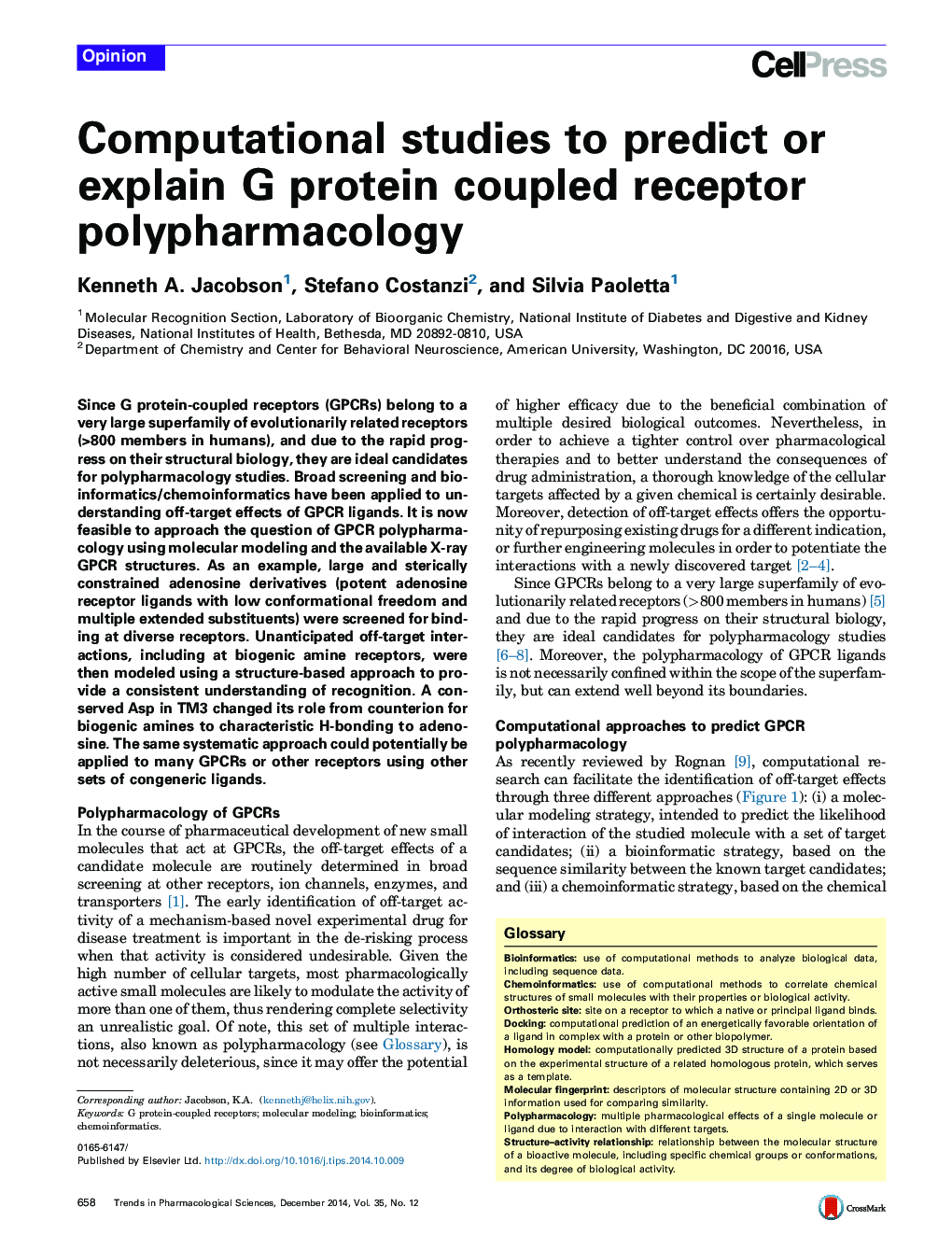| Article ID | Journal | Published Year | Pages | File Type |
|---|---|---|---|---|
| 2572571 | Trends in Pharmacological Sciences | 2014 | 6 Pages |
•Bioinformatic and chemoinformatic approaches have been applied to G protein coupled receptor (GPCR) polypharmacology.•X-ray structures and molecular modeling enable precise understanding of GPCR interactions.•A set of rigidified adenosine receptor ligands was screened at many off-target proteins.•These analogues dock in consistent orientations at off-target hit GPCR structures/models.•This analysis will guide future drug design to combine or eliminate multiple actions.
Since G protein-coupled receptors (GPCRs) belong to a very large superfamily of evolutionarily related receptors (>800 members in humans), and due to the rapid progress on their structural biology, they are ideal candidates for polypharmacology studies. Broad screening and bioinformatics/chemoinformatics have been applied to understanding off-target effects of GPCR ligands. It is now feasible to approach the question of GPCR polypharmacology using molecular modeling and the available X-ray GPCR structures. As an example, large and sterically constrained adenosine derivatives (potent adenosine receptor ligands with low conformational freedom and multiple extended substituents) were screened for binding at diverse receptors. Unanticipated off-target interactions, including at biogenic amine receptors, were then modeled using a structure-based approach to provide a consistent understanding of recognition. A conserved Asp in TM3 changed its role from counterion for biogenic amines to characteristic H-bonding to adenosine. The same systematic approach could potentially be applied to many GPCRs or other receptors using other sets of congeneric ligands.
